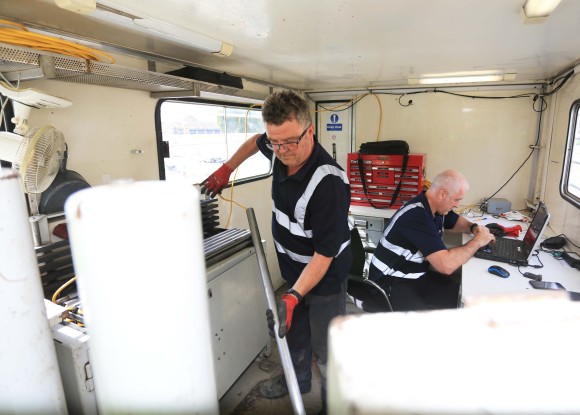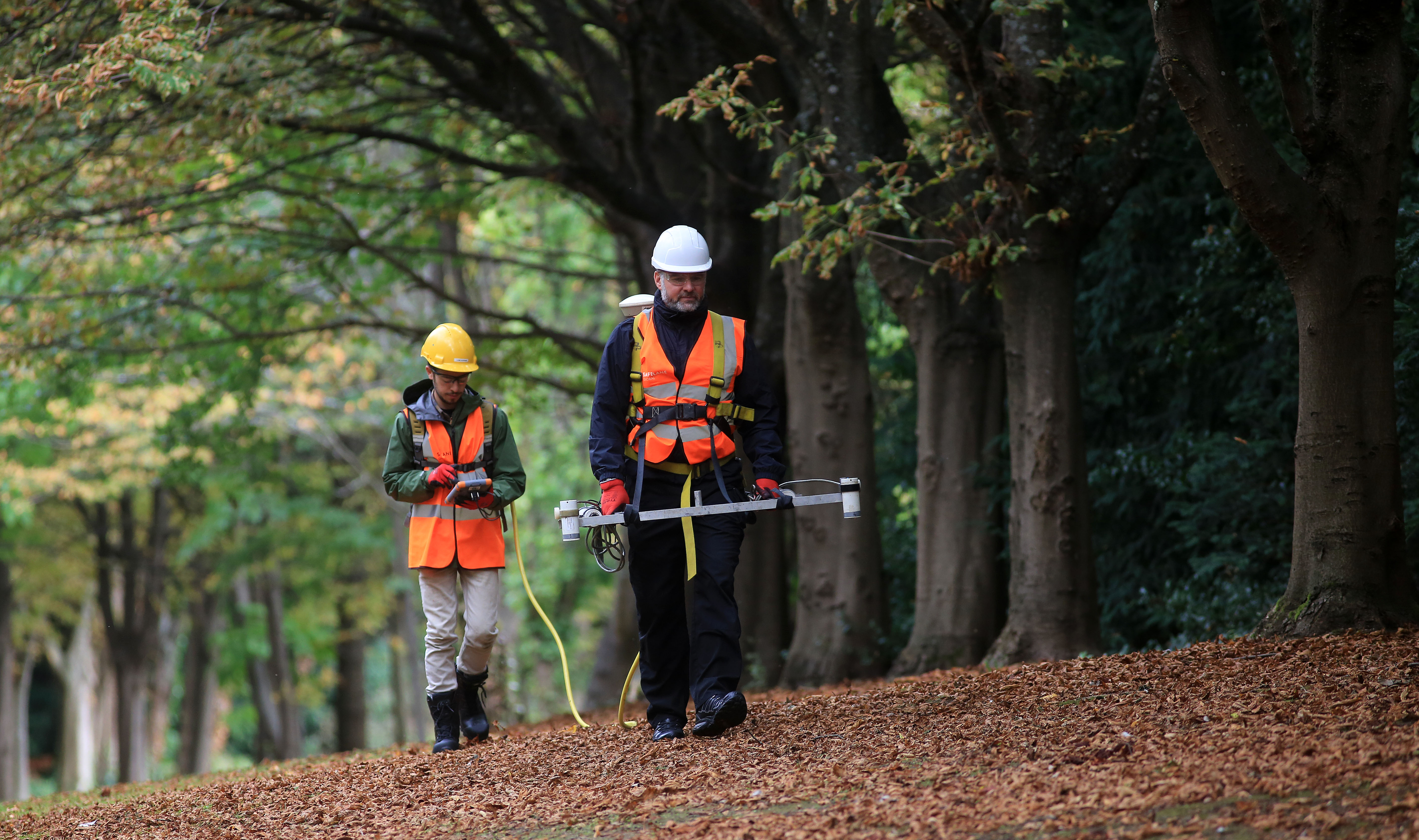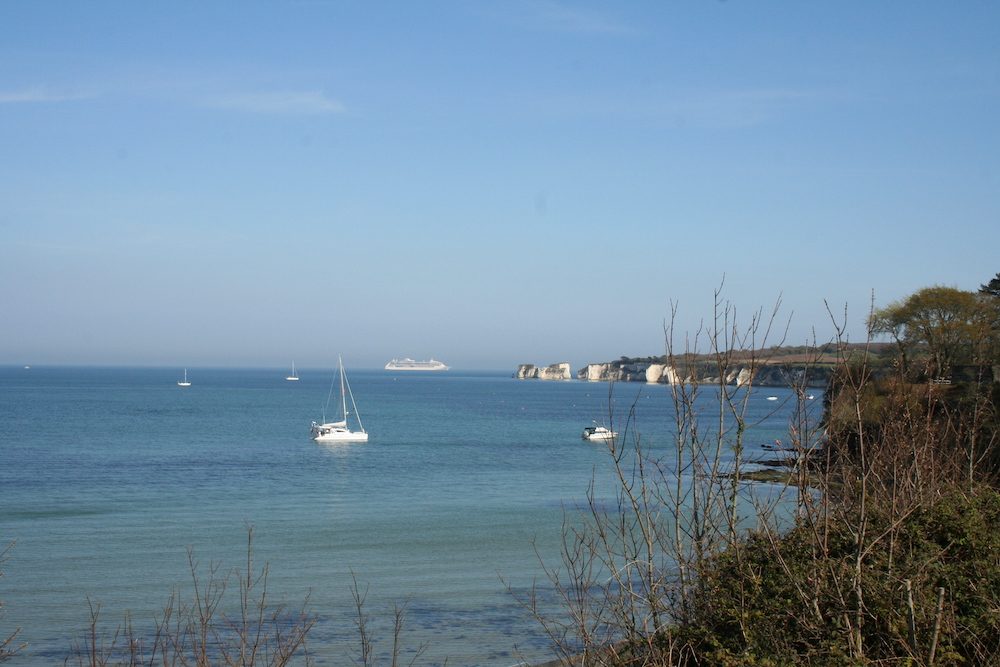UXO survey and clearance work for the National Trust
The National Trust became a new client for Igne in 2020, when we began working for them at Studland Bay in Dorset, dealing with lizards, naturists and of course…ordnance.
Understanding the risk of encountering legacy ordnance from D-Day landing training
The stunning beaches of the Studland peninsula stretch from the boundary of the Jurassic Coast World Heritage Site at Old Harry Rocks north to Shell Bay, where a chain ferry provides a link to Poole and Bournemouth.
Historically, this coastal area was used for training exercises ahead of the D-Day landings. This meant that the National Trust knew they may be at risk of finding historic ordnance when undertaking planned intrusive works in the heathland, well-inland from the beach and dunes.
As a result, and following an assessment by our in-house researchers, Igne was tasked with undertaking UXO surveys to clear certain positions ahead of and during National Trust works.
How Igne is supporting the National Trust’s three ecological projects in Studland
1) Removing illegal carp
The National Trust has three ecological projects underway in the area. The first project concerns Little Sea, an idyllic lake in a beautiful setting that, despite being internationally protected as one of the UK's largest oligotrophic low nutrient lakes, has been harmed.
In the early 2000s a member of the public illegally introduced carp into the lake, and unintentionally started a chain of knock-on effects. Within a few years these bottom-feeding fish churned up sediments that had remained undisturbed for decades and stripped the lake of its highly specialist and rare aquatic plants.
In 2020, bundles of willow were placed into the lake to create still pools where carp could not intrude to allow the rare plants to regrow undisturbed. The bundles are made of small diameter willow tied together; they are particularly effective at providing protection to vulnerable areas in lakes and rivers.
This process in Studland is preventing the disturbance of sediment and will hopefully enable a return to a more balanced environment in Little Sea.
Immediately ahead of the placement of this willow, we surveyed and cleared the positions where stakes were to be driven into the bed of the lake to hold these bundles in place. This enabled fast operations for the National Trust’s contractors who were working immediately behind our explosive ordnance experts.
2) Corralling roaming cows
The second National Trust ecological project in Studland involved the reintroduction of cattle after an 80-year absence; this required the installation of a new fence and access gates.
The work required UXO survey and clearance to 2m for each driven post given the history of the site. We also gave a toolbox talk to all contractors to keep them safe during their own intrusive works.
We surveyed the fence line and marked any anomalies for the fencing contractors to avoid, thus ensuring they were able to remain both on time and safe.
The fence has been installed to protect the cows from straying into certain areas including on to a busy road.
3) Helping lizards propagate
Finally, over the past few months the National Trust has been creating sandy scrapes.
To clear down to 6 inches an initial survey was undertaken, and then to allow them to clear down to bare sand, we worked with the National Trust’s contractor who was driving a tracked excavator to scrape off the top material.
Finally, 10,000sqm were then surveyed using magnetometers.
This work was all done to provide habitat for sand lizards, invertebrates and rare plants. In terms of the lizards, they need bare sand for hibernation and for laying eggs.
Finding ordnance in Dorset
So far during works for the National Trust at Studland in Dorset we have found a number of items of WWII shrapnel from air dropped ordnance as well as projectiles.
If you’re planning any form of intrusive works in Britain, contact Igne for a comprehensive desktop risk assessment first. Understand your risk – and then we can help you mitigate it.
Other articles of interest

Pre-drill surveys Deptford Wharves UK
Pre-drill surveys and full site clearance for a multinational construction infrastructure company.

Non-intrusive survey for a solar energy farm UK
Non-intrusive survey of a former Royal Air Force station that was being developed as a utility scale solar energy farm.


